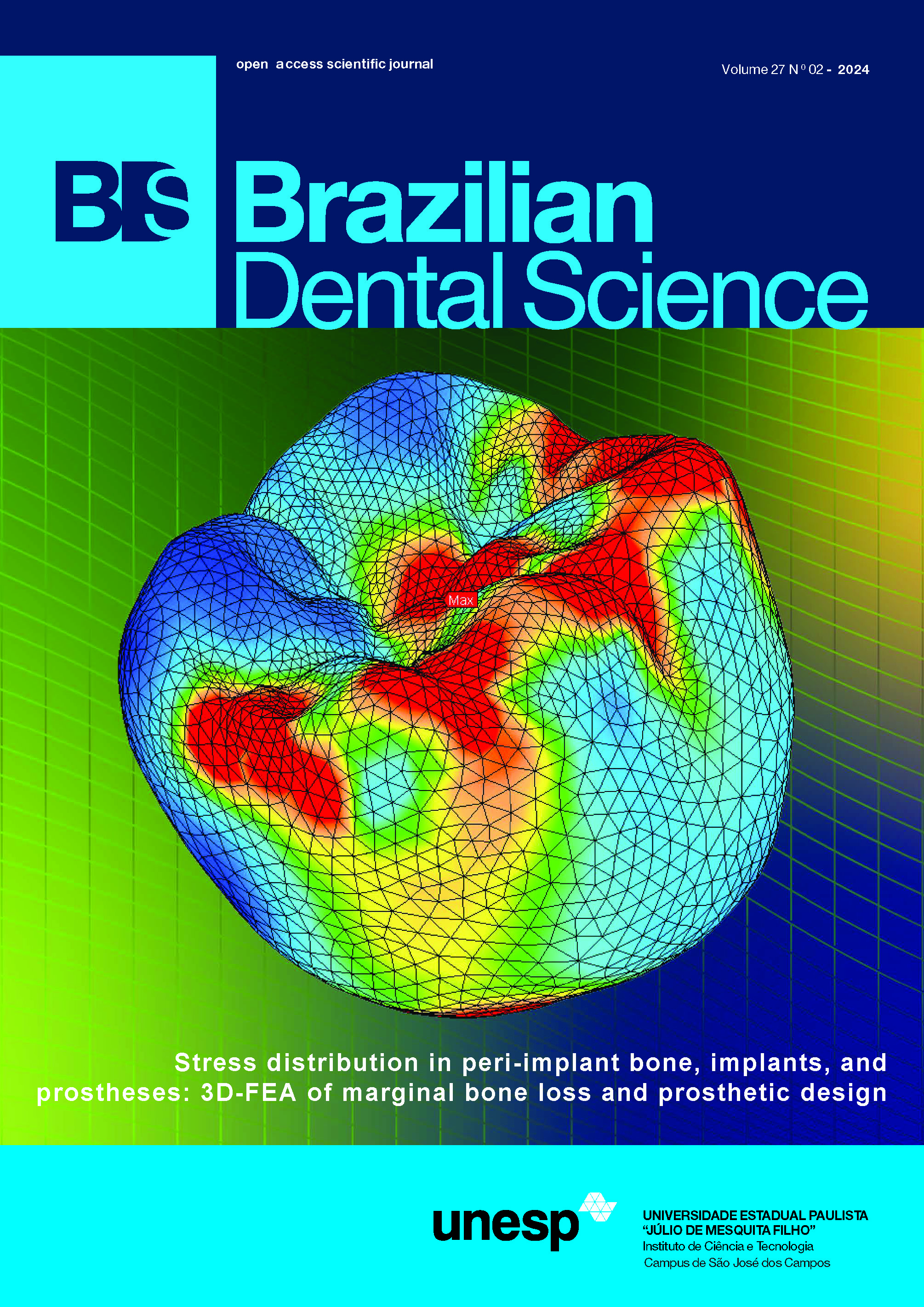Dimensional accuracy of provisional complete crown made by the 3D printing method
DOI:
https://doi.org/10.4322/bds.2024.e4366Abstract
Objective: This study evaluated the dimensional accuracy of provisional complete crowns printed with photopolymerizable resin using an LCD-type 3D printer through optical metrology, varying the printing angle and the number of complete crowns printed at once on a single-build platform. Material and Methods: The complete crowns were printed with temporary crown resin, A2 temporary (Wilcos do Brasil), divided into four groups with n=12: Group A - 3 complete crowns positioned at 150° on the x-axis; Group B - 4 complete crowns positioned at 150° on the x-axis; Group C - 3 complete crowns positioned at 180° on the x-axis; and Group D - 4 complete crowns positioned at 180° on the x-axis. Dimensional accuracy was assessed by overlaying images in the Gom Inspect measurement software, where the STL of each complete crown was aligned and compared to the master model. For statistical analysis, one-way ANOVA and Shapiro-Wilk tests were used. Results: No significant statistical difference was observed between the different angles, or the number of complete crowns printed at once. Conclusion: Based on dimensional accuracy, the printing of provisional complete crowns with an LCD-type 3D printer shows no significant statistical difference with either the 150 or 180-degree angle variations, and there is also no difference when printing 3 or 4 complete crowns at once.
KEYWORDS
CAD-CAM; Dental crowns; Dental prosthesis; Prosthodontics; 3D printing.
Downloads
Published
How to Cite
Issue
Section
License
Brazilian Dental Science uses the Creative Commons (CC-BY 4.0) license, thus preserving the integrity of articles in an open access environment. The journal allows the author to retain publishing rights without restrictions.
=================




























